How to Get Your Drone Licence in QLD
Step by Step Guide
Considering a drone licence? You should. Australian drone pilots earn an average of $85,000 per year, and senior pilots can make more than $100,000 annually. Plus, qualified pilots are in high demand, which makes professional drone pilot courses a valuable investment.

The Remote Pilot Licence (RePL) lets you legally operate drones weighing more than 2kg for commercial purposes in Australia.
Drones are transforming business operations throughout Queensland and beyond through aerial photography, agricultural mapping, surveying, and infrastructure inspections.
The path to getting your commercial drone licence is shorter than you might think. Students typically complete their training in about 5 days and get at least 5 hours of hands-on flying experience in different conditions. The training covers drone operations across weight categories up to 7kg.
This guide will take you through each step to get your drone licence in Queensland. You’ll learn about choosing training providers and completing certification requirements.
Queensland-specific regulations play a key role in the process. Toll Uncrewed’s world-class instructors provide detailed in-person training to help you become a licensed drone pilot quickly and effectively.
Queensland’s Drone Industry and Regulatory Environment
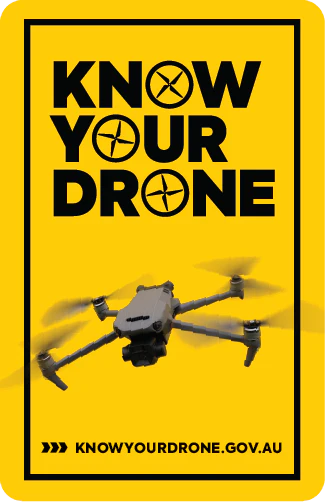
Queensland pioneers Australia’s growing drone industry. The state’s variety of landscapes from coastal cities to vast outback regions creates unique challenges and opportunities for drone operators.
Drone pilots in Queensland must follow federal CASA (Civil Aviation Safety Authority) regulations and local Queensland laws. These rules differ between recreational and commercial flying. Commercial operators need a Remote Pilot Licence (RePL). Businesses must also obtain a RPA Operator’s Certificate (ReOC).
The Queensland government backs the drone sector with testing facilities and innovation hubs. These resources make Queensland perfect to build your drone pilot career. Major industries like agriculture, mining, infrastructure inspection, and emergency services now depend on drone technology.
Queensland’s weather patterns create special challenges for drone pilots. The subtropical climate requires training for operations in humidity, heavy rainfall, and strong winds. Toll Uncrewed Systems gives you an edge as a Queensland-based provider. Our programs tackle these regional flying challenges head-on.
Flying in Queensland requires knowledge of specific no-fly zones near airports in Brisbane, Gold Coast, and Cairns. Temporary restrictions apply during events or emergencies. Local councils might add extra rules beyond CASA requirements, especially in busy areas like Brisbane or the Gold Coast.
Toll Uncrewed Systems’ Queensland-focused training helps you develop skills for the state’s environment. Our expert instructors provide personal, hands-on training until you get your licence. Small class sizes ensure you get proper guidance throughout certification.
Preparing for Your Queensland Drone Licence
The journey to becoming a licensed drone pilot starts with picking the right certification for your goals. Australia’s Civil Aviation Safety Authority (CASA) manages all drone operations and has specific requirements for different types of flying.
Self-Assessment: Which Licence Type Do You Need?
You should figure out the right qualification before you sign up for any course:
- Remote Pilot Licence (RePL) – You need this to fly drones over 2kg commercially or work for a business with a ReOC.
- Remote Operator’s Certificate (ReOC) – This is essential if you want to run your own drone business.
- Excluded Category – This lets you fly drones under 2kg commercially without a RePL, though with many restrictions.
- Landowner Exclusion – You can operate drones up to 25kg on your land without a ReOC.
What to Look for in a Training Program
A good training program should blend theory with hands-on practice.
Your instructors should have ground experience beyond just book knowledge. The program must give you the full 15 hours of facilitated study.
Your training should cover Queensland’s unique weather patterns since subtropical conditions create special challenges for drone operators.
Pre-Training Study Resources
Start by getting your Aviation Reference Number (ARN) through the myCASA portal.
Check if your current aviation qualifications count toward recognition of prior experience, it could reduce your training time.
Fixed wing or rotary wing pilots with commercial experience might only need to complete the RPA-specific parts of theory and practical training.
Not sure what drone course you need?
Call one of our training consultants who can help you determine what you need. We understand it can be confusing and our training team are ready to assist!
The Queensland Licensing Journey Timeline
Getting your drone pilot licence in Queensland follows a clear timeline.
A good understanding of each phase helps you prepare better and know what to expect during certification.
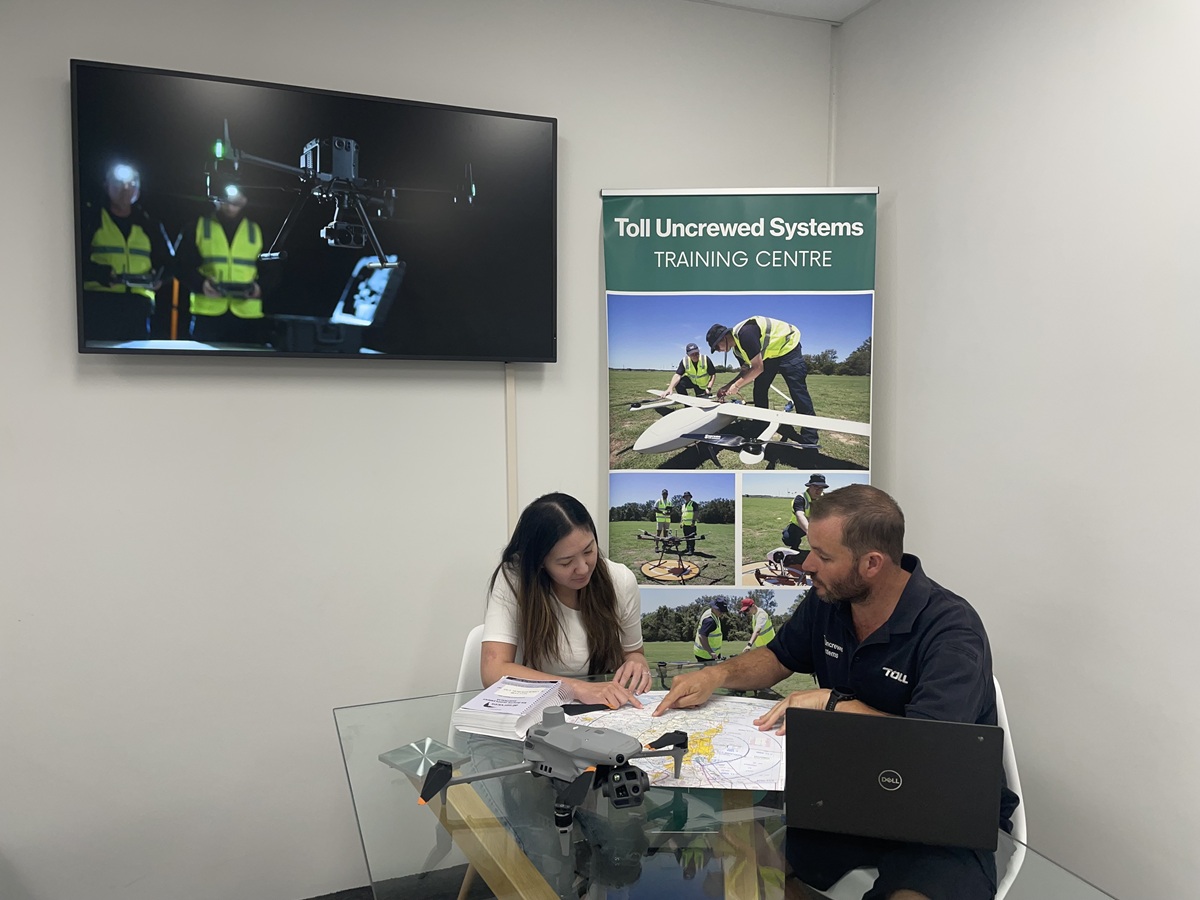
Phase 1: Application and Enrollment (1-2 Weeks)
Start by researching CASA-approved training providers in Queensland to find one that matches your needs.
Toll Uncrewed stands out because of its world-class instructors who support you throughout your certification.
Once you pick a provider, complete the enrollment paperwork and book your spot in an upcoming course.
Most providers run regular courses in Brisbane and offer group booking options elsewhere in Queensland.

Phase 2: Theory Training (3 Days)
The theory part usually takes 2-3 days and covers everything in drone operation:
- Aviation regulations and air law
- Meteorology and weather assessment
- Drone systems and components
- Principles of flight and aerodynamics
- Human factors and decision-making
- Operational procedures
Toll Uncrewed lets you access theory training through face-to-face classes or virtual classrooms. All materials stay available through their online portal.
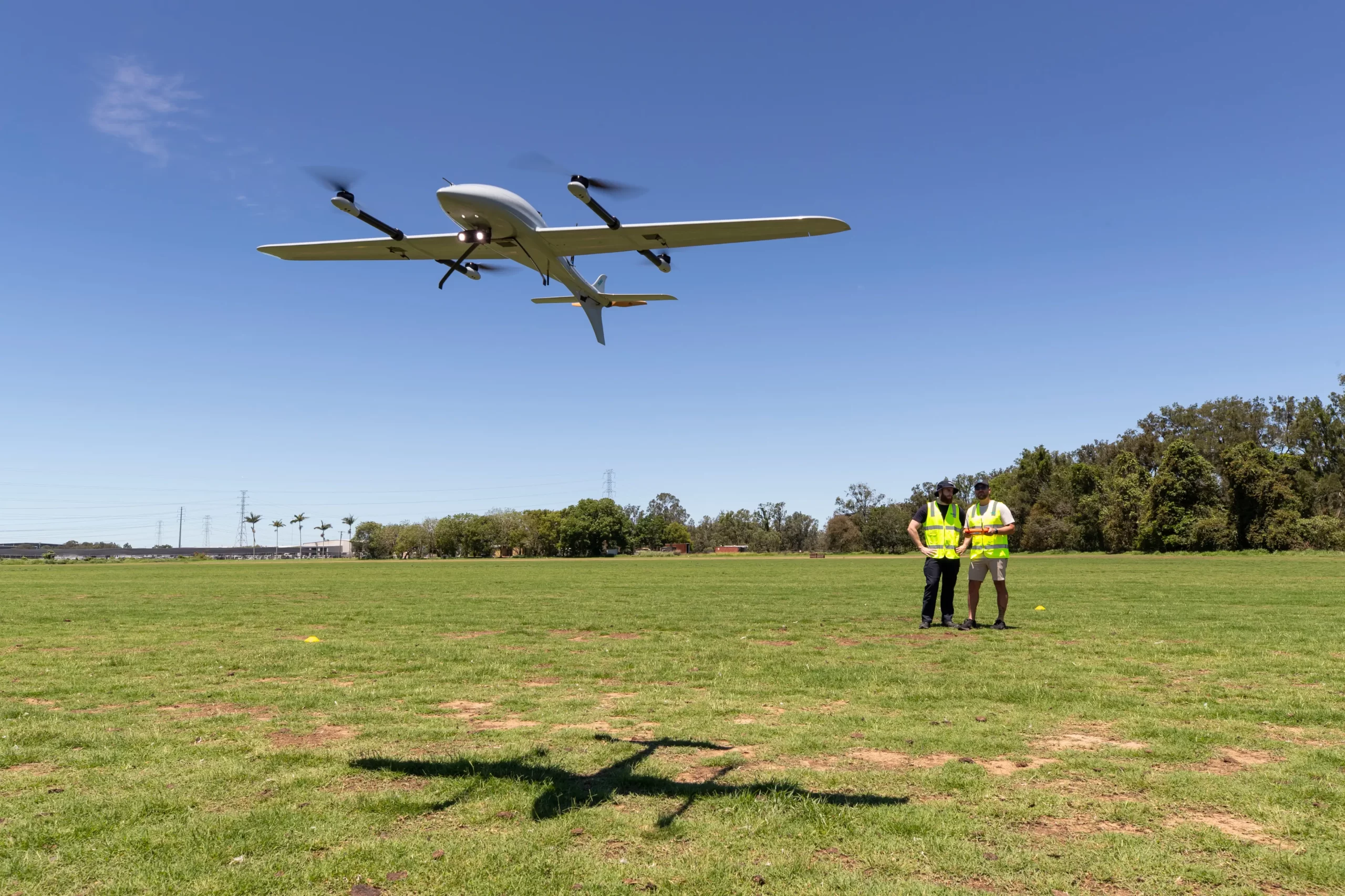
Phase 3: Practical Flight Training (2 Days)
You need a minimum of 5 hours of hands-on flying time. This phase builds your practical flight skills.
Brisbane students complete their practical training at Toll Uncrewed’s flight area.
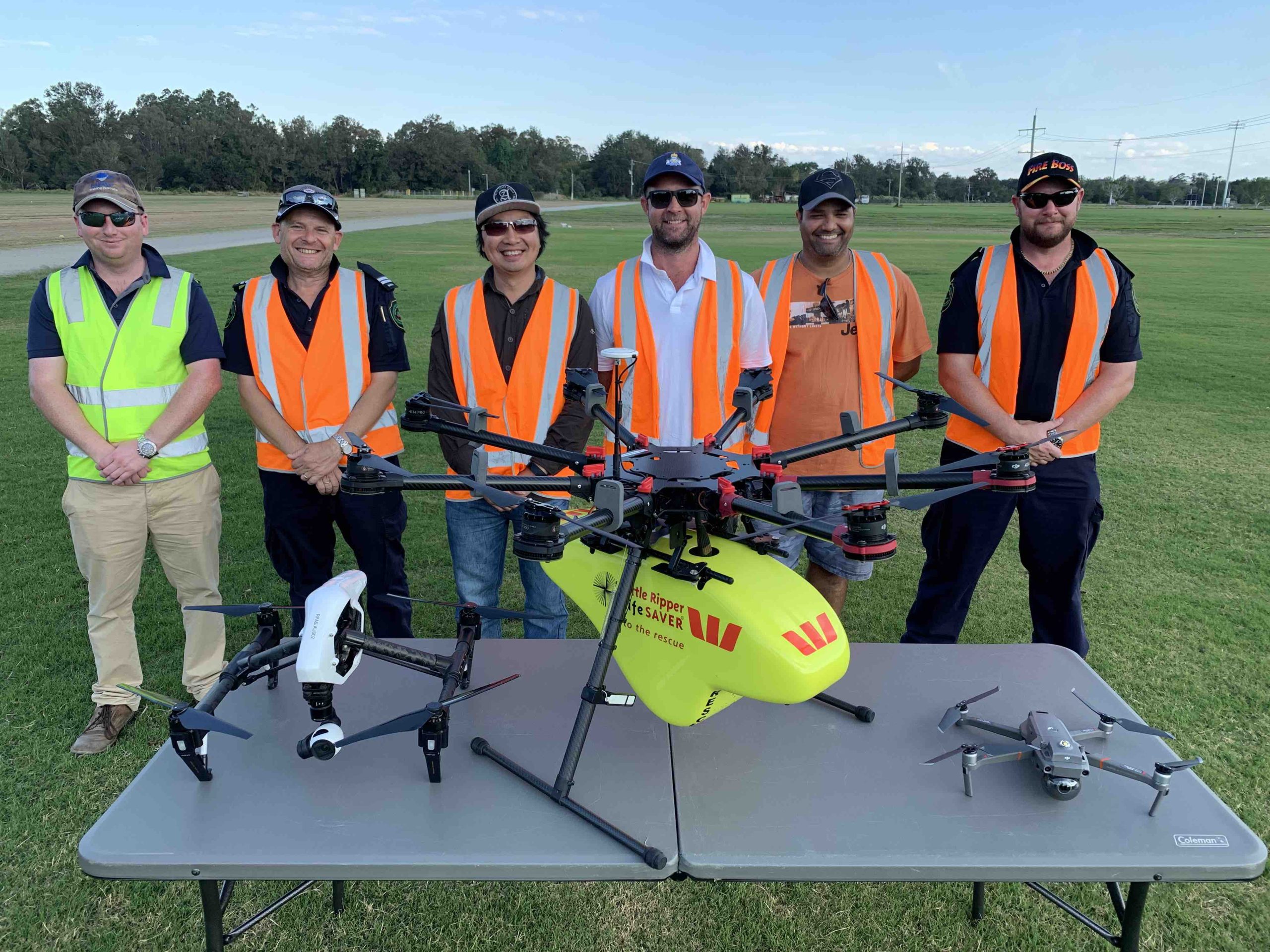
Phase 4: Assessment and Certification (1 Day)
After finishing both theory and practical training, you’ll take:
- A theory exam that tests your knowledge of regulations and procedures
- A practical flight test that evaluates your piloting skills
Toll Uncrewed provides extra support if you don’t pass your original attempt. They offer remedial training.
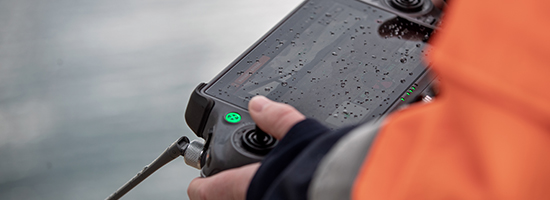
Phase 5: CASA Processing Time (2-6 Weeks)
Your training provider sends your results to CASA after you pass your assessment. You should receive your official Remote Pilot Licence within 3 working days.
The whole process from enrollment to getting your drone licence QLD typically takes 2 weeks.
Queensland-Specific Training Considerations
Getting your drone pilot licence in Queensland means you need to think over several local factors that affect your learning journey and future work.
Queensland’s climate creates special challenges for drone pilots. The weather directly shapes flight safety and performance. Wind speed, temperature, precipitation, and visibility affect your drone’s stability, battery life, and sensor accuracy. Your drone becomes harder to control in strong winds, especially while you’re still learning the ropes. You’ll need to understand the weather patterns well to plan safe and successful flights in Queensland.
Queensland has several quality training providers. Toll Uncrewed Systems offers scheduled drone courses in Brisbane and arranges training anywhere in Australia. Our expert team brings decades of aviation experience to Australia’s most trusted drone courses.
Brisbane's training facilities stand out from the crowd. Toll Uncrewed lets you practise with platforms from DJI, Foxtech, and Wingtra. This hands-on experience builds skills that employers value. Unlike online-first training providers, our students work closely with our world-leading instructors throughout their training journey.
Post-Certification Steps for Queensland Operators
Your drone pilot licence is just the beginning. Several steps await before you can start operating in Queensland. These next actions will keep you legally compliant and ready for your drone career.
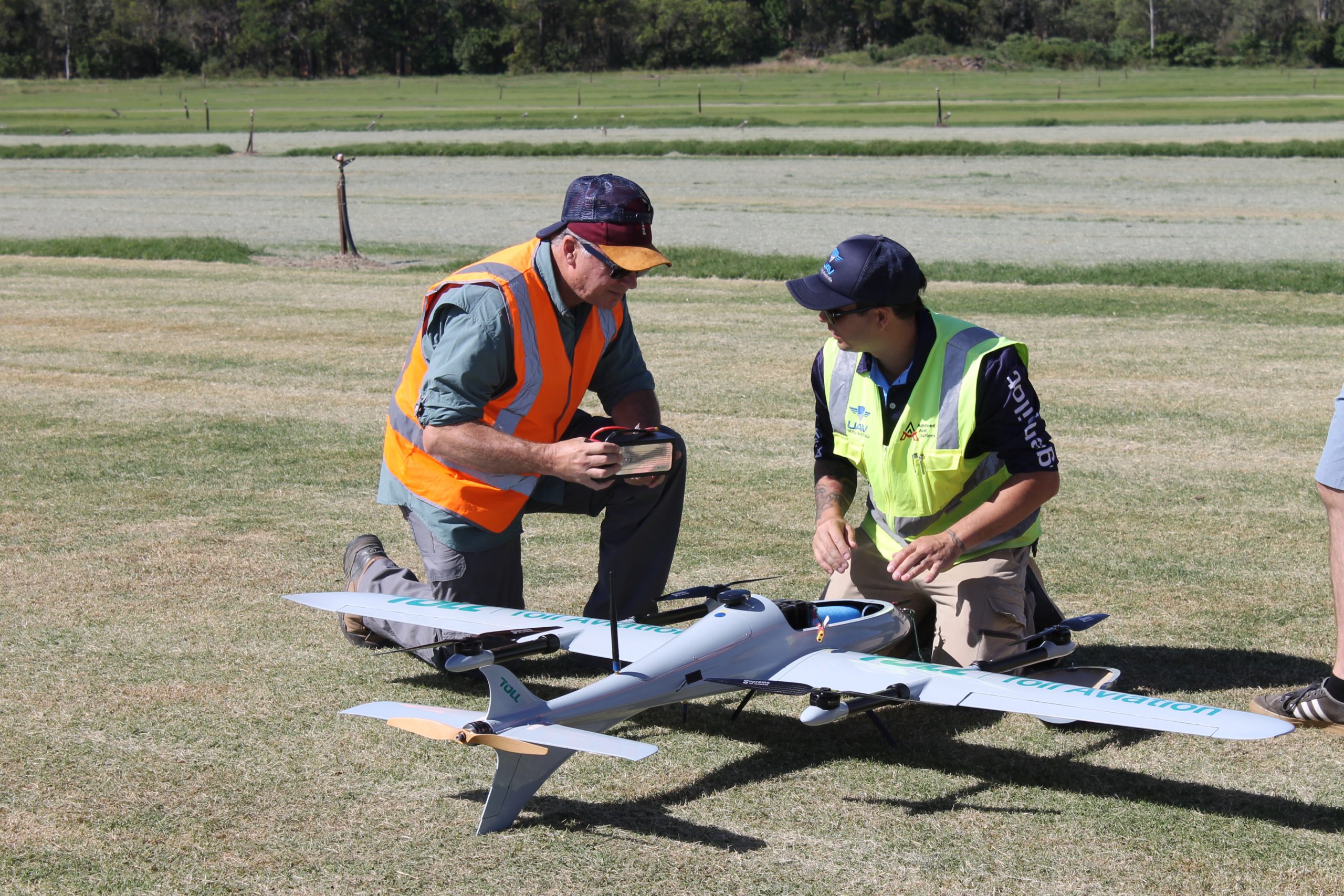
Local Council Notifications and Requirements
Queensland local councils have their own rules for drone operations that go beyond CASA regulations. You’ll need a permit to launch, land, and operate drones from Council land unless you’re in designated flying areas.
Your drone pilot licence means you must follow Civil Aviation Safety Regulations Part 101 while in the air. Each Queensland region has different requirements, so check with your local council before starting any commercial operations.
Joining Queensland Drone Communities
Queensland’s drone communities are a great way to get networking opportunities and keep learning. The state has many well-established groups like Next Level FPV on the Gold Coast and Townsville FPVR in North Queensland.
These groups run regular meet-ups, competitions, and share their knowledge. Toll Uncrewed’s detailed training programs connect you with these professional networks. This gives you an early advantage with links to potential clients and employers.
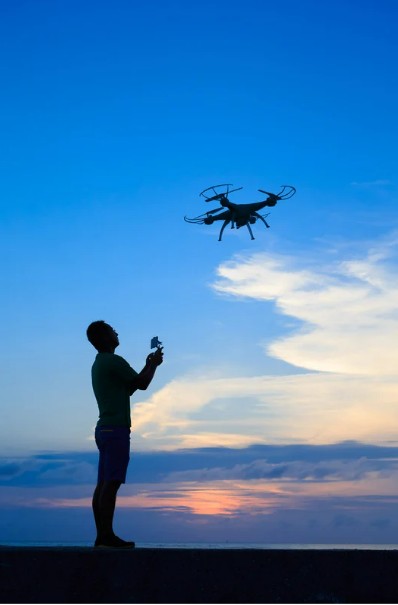
Insurance Options for Queensland Operators
Professional drone operators must have proper insurance. Australian companies that offer specialised drone insurance include:
- Coverdrone – Offers protection for both commercial and recreational operators, with worldwide coverage options.
- Allsure – Provides customisable liability, equipment, and transit coverage.
- QBE – Features dedicated drone insurance policies that cover public liability and equipment protection
Finding Employment in Queensland’s Drone Industry
Queensland’s variety creates many opportunities in agriculture, mining, construction, emergency services, and tourism.
Toll Uncrewed helps graduates find jobs through their industry connections. Their practical training with state-of-the-art technology helps you develop exactly what Queensland employers need.
Queensland Flying Locations and Restrictions
Flying your drone legally in Queensland requires you to be aware of the rules.
The state's varied landscape is accompanied by specific regulations that vary based on your location and the local government area.
Legal recreational flying spots need proper planning. CASA regulations state you must keep your drone below 120 metres above ground level and always maintain visual line of sight. The Gold Coast City Council lets you fly at Prairie Reserve in Ormeau without a permit. You'll find designated zones across Queensland that allow recreational flying under specific conditions, usually for drones under 2kg during daylight hours.
Whatever your licence status, some areas remain strictly off-limits. Your drone must stay 5.5km away from controlled airports with towers. Drones under 250g cannot exceed 45m height when flying within this zone. You can’t fly within 1.4km of helicopter landing sites if helicopters operate nearby. Areas with ongoing emergency operations, like firefighting efforts, are completely off-limits.
Local councils add their own rules on top of CASA’s regulations. To name just one example, the Sunshine Coast Regional Council needs permission to launch aircraft weighing more than 500g. Logan City Council requires permits to operate remote-controlled aircraft in parks. Council requirements change often, so check them before each flight.
Queensland Parks and Wildlife Service maintains strict drone policies. Protected areas don't allow drones in camping zones. Your drone might disturb wildlife in other park locations, especially birds, and affect visitor privacy. The Queensland Government requires specific permits for commercial purposes, research, or drones over 2kg.
Toll Uncrewed’s complete training highlights these Queensland-specific rules. Their expert instructors help you become skilled at navigating these complex regulations. You’ll learn not just how to fly, but where you can legally operate throughout Queensland.
Queensland Resources and Support
Queensland has many resources that support drone pilots before and after they get their licence.
Queensland Government Drone Initiatives
Queensland’s Drone Strategy (QDS) has made the state a world leader in drone technology.
This detailed plan launched in 2018 brings in investment, grows industry capabilities, drives research, creates community-friendly policies, and helps deliver better government services. The government’s Advance Queensland program funded major drone projects, including $1.53 million to develop and test technologies with Boeing’s Insitu Pacific.
Queensland also hosts the Defence Cooperative Research Centre for Trusted Autonomous Systems, a $76.45 million centre that develops drone technology for Australia's Defence Force.
Local Industry Associations
The Australian Association for Uncrewed Systems (AAUS) represents Australia’s drone industry.
AAUS membership connects you with other professionals, gives you industry news access, and lets you join events that shape Australian drone operations’ future.
Several industry groups now support Queensland’s drone ecosystem and provide networking and professional growth opportunities.
Queensland-Based Forums and Communities
Queensland’s drone pilots find great support in online communities. DIY Drones Brisbane chapter members discuss technical topics and share job opportunities.
MavicPilots has Queensland-specific discussions where local pilots share flying advice and good spots to fly.
These platforms help pilots stay current with rule changes and learn from each other's experiences.
